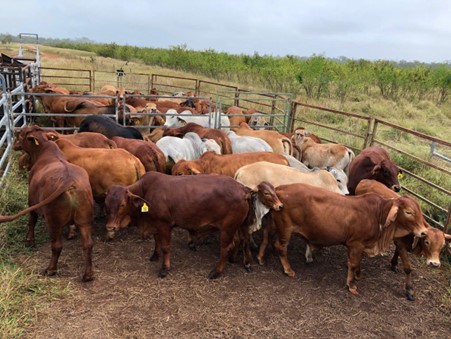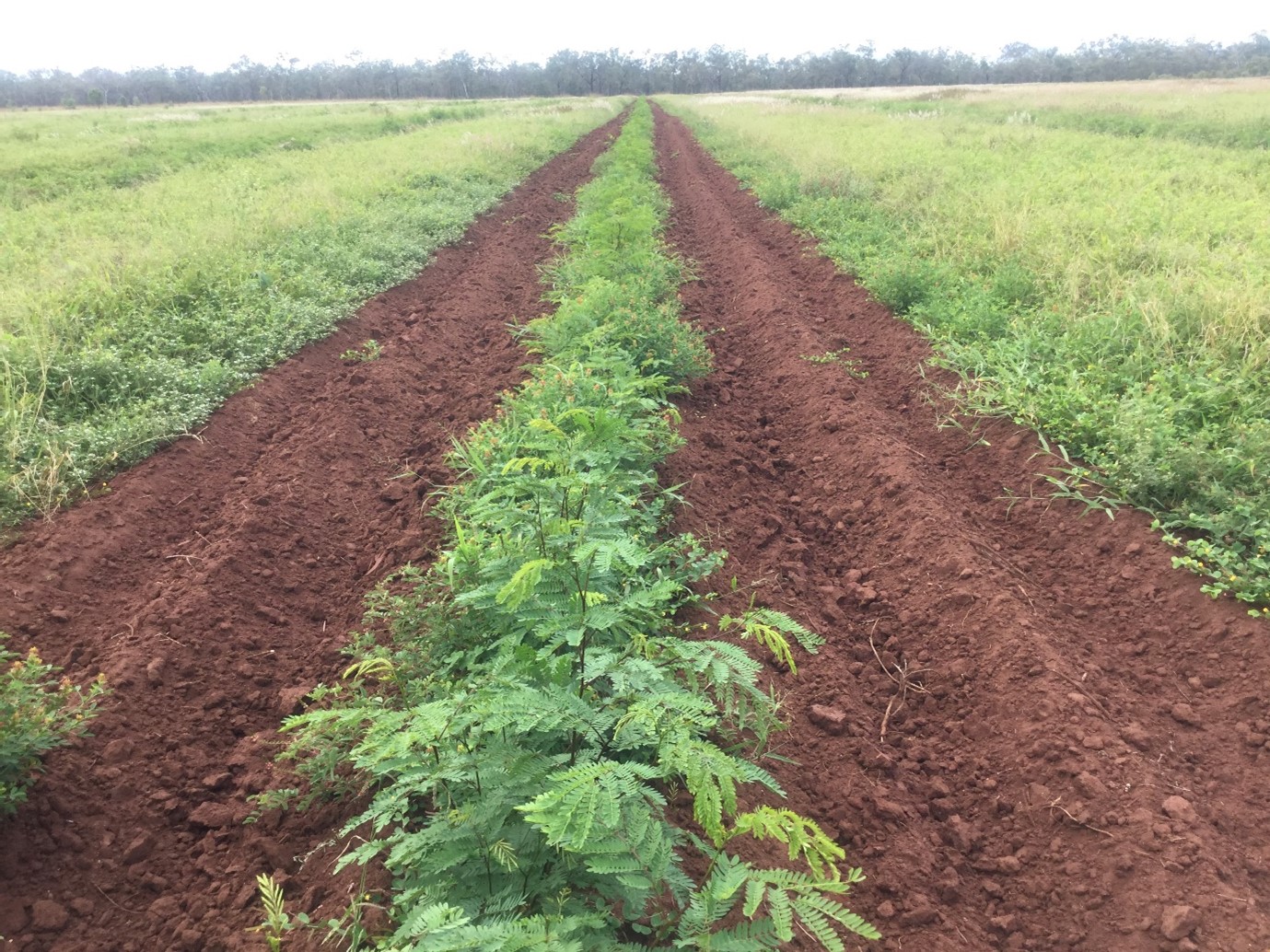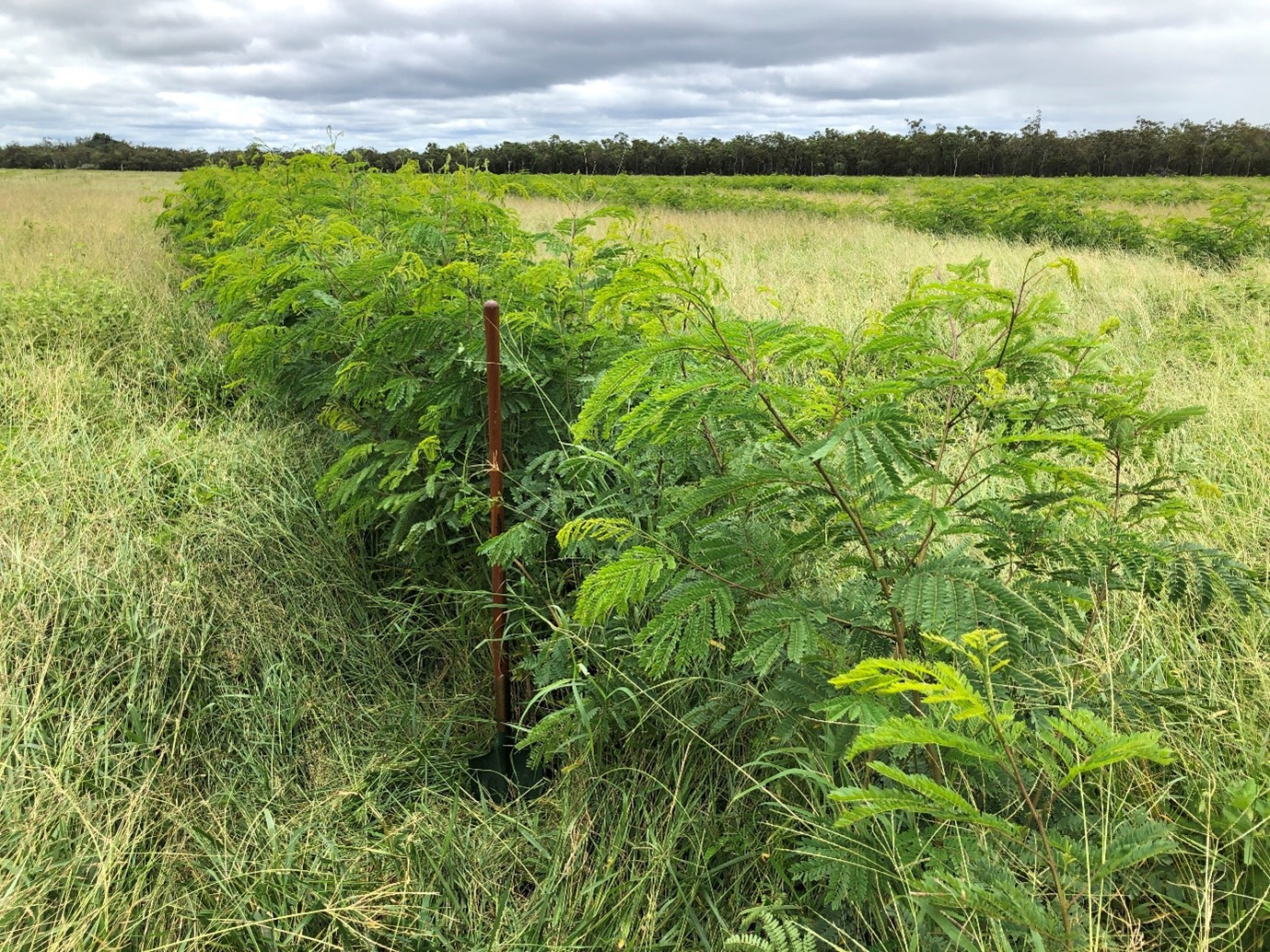Leucaena – spurring on liveweight gain in the north
With its ability to bridge the seasonal nutrition gap in the north, leucaena under best practice management can maintain positive cattle weight gains through the dry season. Like other regions of Queensland, leucaena establishment in the north requires a well-prepared seed bed and good weed control. However, northern Queensland comes with unique challenges, particularly maintaining healthy interrow pastures, keeping leucaena accessible, and controlling the spread of leucaena. A lack of cleared country for leucaena establishment and general producer cropping inexperience compared to central Queensland also limit its adoption.
Leucaena pasture systems have huge potential to increase liveweight gain and carrying capacity and improve market options in north Queensland. Leucaena has been used as cattle fodder in Queensland for over 50 years, with most plantings mainly being in the Central Queensland fertile brigalow soils. North Queensland has a slowly expanding establishment area and most recent leucaena field research has been undertaken here.
A four-year grazing trial at Pinnarendi Station near Mt Garnet, North Queensland (funded by Meat & Livestock Australia and the Department of Agriculture and Fisheries), was undertaken to compare the performance of Wondergraze and the psyllid tolerant Redlands variety. Results were excellent for both varieties, with weaner steers having an average daily gain (ADG) of 0.61kg a day over the course of a year. Additionally, a group of heavyweight steers (511kg average entry weight) were fattened to slaughter weight. They had gained an average of 103kg over 138 days during March to July which was an ADG of 0.75kg. Leucaena and fertilised improved pastures at Pinnarendi increased carrying capacity at the 70ha site from 1AE to 8ha (90kg average live weight gain (ALWG)) to 1AE to 2ha (200 kg ALWG). The promotion of these results, coupled with the release of Redlands, has seen a tripling of leucaena plantings in north Queensland over the last 5 years.


Leucaena should be established on your best soils that have moderate to high fertility and water holding capacity, without being prone to water logging. In north Queensland, high phosphorus alluvials, basalts, Georgetown and goldfield granite soils will often be your best option, with cleared red earths also being utilised. In many situations fertiliser will be required to boost soil fertility for long-term leucaena productivity.
Good seed bed preparation and attention to weed control for 3-4 months after planting are critical for good germination and establishment. At most locations, planting must coincide with the wet season—with mid-February being the approximate cut-off date. Therefore, preparation must be done well in advance to take advantage of suitable conditions. At wet coastal sites, planting is best done after the main wet season—beginning in about March and continuing to about June. While it may be tempting to do more, it is critical to only establish what you are able to manage. Cropping experience or advice, and a farming mentality is needed. Well established leucaena is vigorous and can easily become out of control if left ungrazed or poorly managed.


Leucaena can be grown as a stand-alone crop used like a fodder bank (time restricted or strip grazed), or as is more usual, with interrow pastures. Maintaining healthy interrow pastures and controlling the spread of leucaena, whilst keeping leucaena accessible, are the main challenges in northern Queensland. A typical northern leucaena paddock is based on 10m row spacings (double or single) with either native or improved pasture in the interrow. Due to limited paddock accessibility during the wet season, set stocking is often used. This can risk over utilisation of pastures during this time as interrow pastures are preferentially grazed in the wet season when pasture quality is high. To maintain productivity, the interrow pasture requires regular wet season spelling, however this spelling may also result in leucaena growing above grazing height and spreading into the interrow. To avoid this situation and the issue of excessive wet season leucaena growth, recommendations are currently for wider row spacings (12-14m) than have previously been planted and more regular cutting to maintain appropriate grazing height, while controlling woodiness and spreading. This strategy, combined with wet season spelling and rotational grazing should help to achieve a better ratio of grass to leucaena and better utilisation of leucaena overall.
Feeding leucaena for maximum profit – where can it grow; establishment tips and what can help maximize grazing benefits.
In a recent Futurebeef webinar, DAF researchers Terry Beutel, Craig Lemin and Diane Ouwerkerk delved into mapping potential land areas for leucaena. They discussed increased adoption of leucaena spurred on by the release of Redlands and inoculating cattle with a new TriMix of rumen bacteria for enhanced utilisation and detoxification of leucaena.
Looking for local advice on leucaena in north Queensland?
Under the North Queensland Pasture Resilience Program, DAF’s northern pasture team is keen to help producers establish, manage and utilise leucaena and sown pastures. To find out more about the program or get in touch with one of the team click here.
The Queensland Pasture Resilience Program is a partnership between the Department of Agriculture and Fisheries, Meat & Livestock Australia and the Australian Government through the MLA Donor Company.